Inula Helenium (Elecampane)
Inula helenium is a perennial herbal plant belonging to the Compositae or Sunflower family. The common names of these plants include Elecampane, Horse-heal and Marchalan. These composite plants are found in large areas of Europe, Great Britain and Asia. The roots and flowers of Inula helenium are used for various medicinal purposes. Recent studies show that Inula helenium extracts are capable of killing various kinds of bacteria including the methicillin-resistant Staphylococcus aureus.

Inula Helenium (Elecampane)
Table Of Content
Elecampane Scientific Name
The scientific name for these herbal plants is Inula helenium.
History of Inula helenium
These medicinal plants have been used by humans for a long period of time. Ancient Romans, Europeans and Greeks used to cultivate Elecampane for various medicinal purposes. This herb was used as the main herbal ingredient in the preparation of a digestive wine during medieval period. These plants were mentioned in the works of many ancient writers and poets. Inula helenium was also used in traditional Ayurvedic and Chinese medicines.
Description of Inula helenium (Elecampane) Plant
These herbal plants are quite attractive with their large leaves and beautiful flowers.
Height: These plant usually grow somewhere between 3meters and 5 meters in height.
Leaves: They have large green leaves with toothed edge.
Flowers: The flowers of these plants are approximately 2 inches broad with many rays. These bright yellow flowers resemble sunflowers and are used for medicinal purposes.
Root: The thick, mucilaginous root has many secondary roots or branches. It has bitter taste with a camphor-like smell blended with a floral aroma.
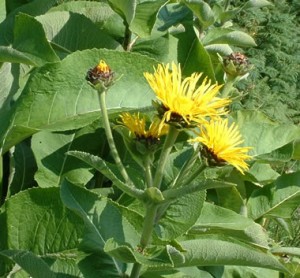 Picture 1 – Inula helenium (Elecampane)
Picture 1 – Inula helenium (Elecampane)
Inula helenium Distribution
This herb is mainly found in many parts of Great Britain as well as in central and southern regions of Europe. The distribution range also includes Asia with the eastern range extending as far as the Himalayas.
Inula helenium (Elecampane) Cultivation
These plants can be grown easily with root cuttings. Small (2 inches) pieces should be cut from matured Elecampane roots and kept indoors covered with sandy soil during winter. The root cuttings can be planted outdoors once they start developing new shoots around spring.
Growing Conditions
Soil: The root cuttings need sandy soil to develop shoots. Well drained clay loam soil is ideal for the proper growth of Elecampane plants. The acidity or pH of the soil should be between 5.5 and 8.
Temperature: The temperature should be somewhere between 50 and 60 °F for the root cuttings to develop properly.
Sunlight: These plants grow well when protected from direct sunlight by a light shade.
Water: They need regular watering to grow properly.
Harvesting
The Elecampane roots become properly matured two years after planting. Their harvesting should be done only after they reach this level of maturity. Otherwise the roots will not have the desired medicinal effects. Flowers bloom between July and September. One can cultivate the flowers as required.
Health Benefits of Inula helenium (Elecampane)
These medicinal plants have various health benefits to offer.
- They have anti-fungal, anti-tussive, anti-parasitic, anti-bacterial, anti-septic and diuretic properties.
- The roots of these plants are beneficial for cough, cold, asthma and bronchitis as they have expectorant properties.
- Its principal constituents include pectin, inulin, mucilage, sterols, triterpenoid saponins and sesquiterpene lactones making it highly effective against various health disorders.
- These roots are also highly beneficial for the digestive system.
Inula helenium Nutritional Information
These medicinal plants are rich in various vitamins, minerals and other nutrients. It contains different minerals including calcium, magnesium, iodine, iron and sodium. Their Flowers and roots contain vitamins A, C, E, vitamin B12, vitamin B5, beta-carotene, selenium and niacin.
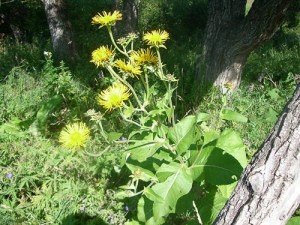 Picture 2 – Inula helenium (Elecampane) Photo
Picture 2 – Inula helenium (Elecampane) Photo
Uses of Inula helenium (Elecampane)
Both the roots and flowers of these herbal plants are used for many culinary as well as medicinal purposes. They are used both in their fresh and dried form. Oil is extracted from the roots of these plants using the steam distillation process. This clear brown colored essential oil is used for many medicinal purposes as well.
Edible Uses
- Raw or boiled Inula helenium roots are consumed as food.
- These roots are often used for flavoring alcoholic beverages.
- This herb is sometimes used as a flavoring agent for desserts.
- Dried roots of these plants are used to make herbal tea.
Medicinal Uses
- Elecampane root tincture is used to treat health disorders like asthma, bronchitis, hay fever and cold.
- It is used to relive indigestion and other stomach disorders.
- The essential oil extracted from these roots is used in the treatments of chronic diarrhea and bronchitis.
- The herbal tea made from the roots is useful in healing many respiratory problems.
- Decoction or syrup made from the flowers of these plants is used to alleviate gas, abdominal bloating and nausea.
- It is used as a remedy for intestinal worms.
Using Inula helenium during Pregnancy
Consuming the root and flowers of these plants should be avoided during pregnancy.
How to Cook Inula helenium?
One can boil the roots or rhizomes of these herbal plants in order to use them as vegetable. Sometimes, they are peeled and eaten raw.
How to Store Inula helenium?
One can store the roots and flowers of these plants after drying them properly. Dried Elecampane herb is stored in airtight containers and kept away from direct sunlight.
Inula helenium Interesting Facts
There are interesting stories and mythologies associated to these herbal plants.
- According to legends, the elecampane plants originally grew from the tears of Helen, wife of Greek king Menelaus, whose abduction eventually led to the battle of Troy.
- These plants are also known as Horseheal because they were cultivated by ancient Europeans in order to treat various skin diseases of animals like sheep and horses.
- Inula helenium was highly regarded as a herbal medicine for respiratory problems throughout history and was formerly listed in the U.S. Pharmacopeia.
Inula helenium (Elecampane) Side Effects
It will cause allergic reactions to people who are allergic to plants belonging to the sunflower family. Diabetes patients should also avoid using this herb.
Inula helenium (Elecampane) Price and Availability
One can easily get this herb online or in stores. The price range for these roots is $10 to $15 per pound.
Inula helenium (Elecampane) Pictures
Here are some beautiful images of this herbs:
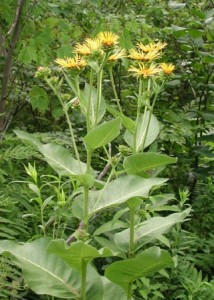 Picture 3 – Inula helenium (Elecampane) Image
Picture 3 – Inula helenium (Elecampane) Image
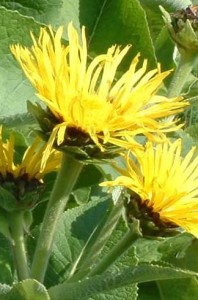 Picture 4 – Inula helenium (Elecampane) Picture
Picture 4 – Inula helenium (Elecampane) Picture
The Inula helenium plants have an amazing history and still are among the most effective herbal medicines used to treat various diseases and ailments. Time has been unable to curb the popularity of these medicinal plants.
References:
https://www.webmd.com/vitamins/ai/ingredientmono-2/elecampane
http://www.herbal-supplement-resource.com/elecampane-herb.html
https://elmaskincare.com/herbs/elecampane/
https://www.webmd.com/vitamins/ai/ingredientmono-2/elecampane
- by Deepamala Bhattacharya
- October 31st 2011

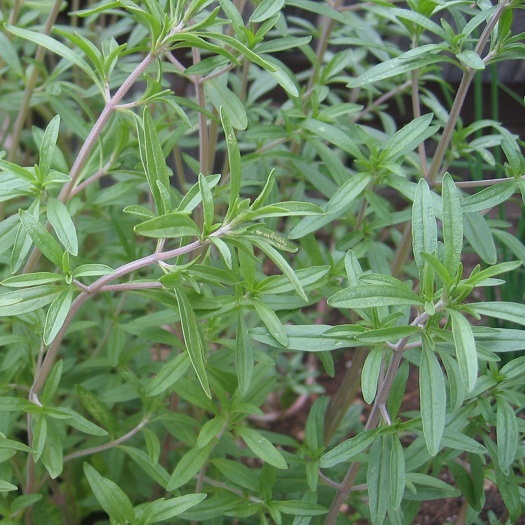
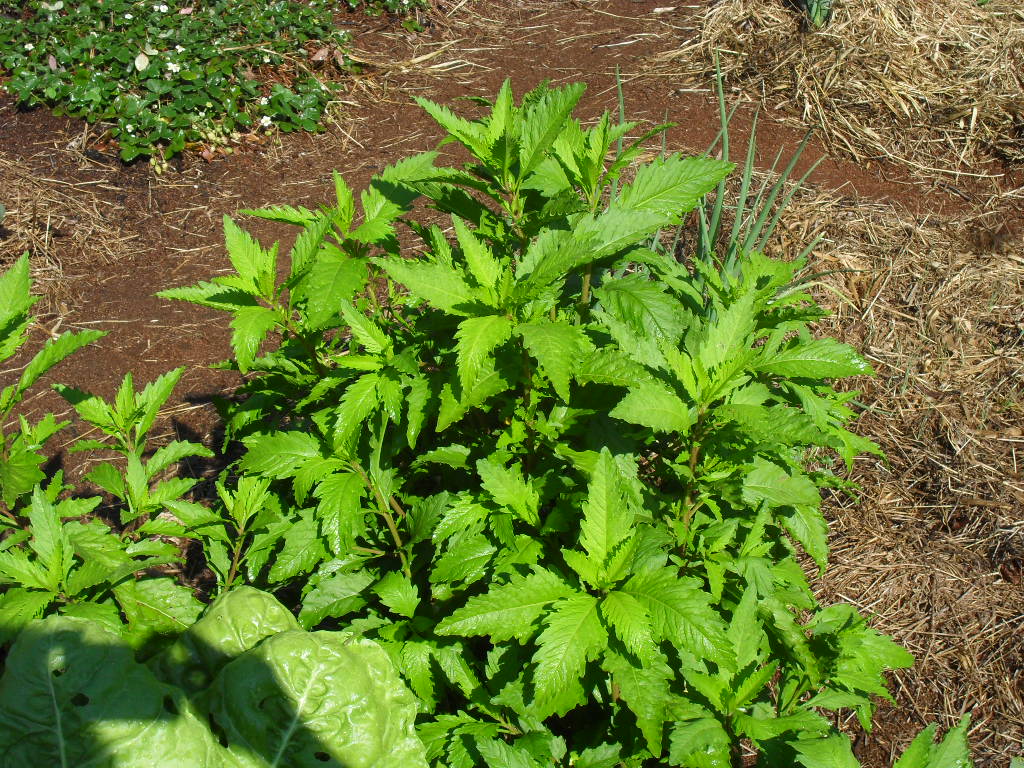

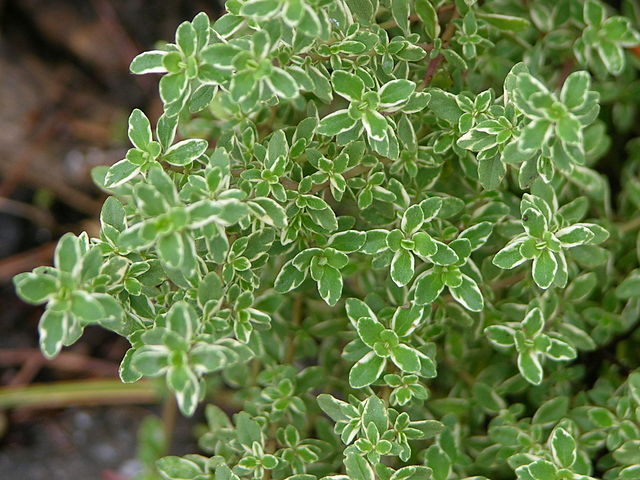















Leave a Reply